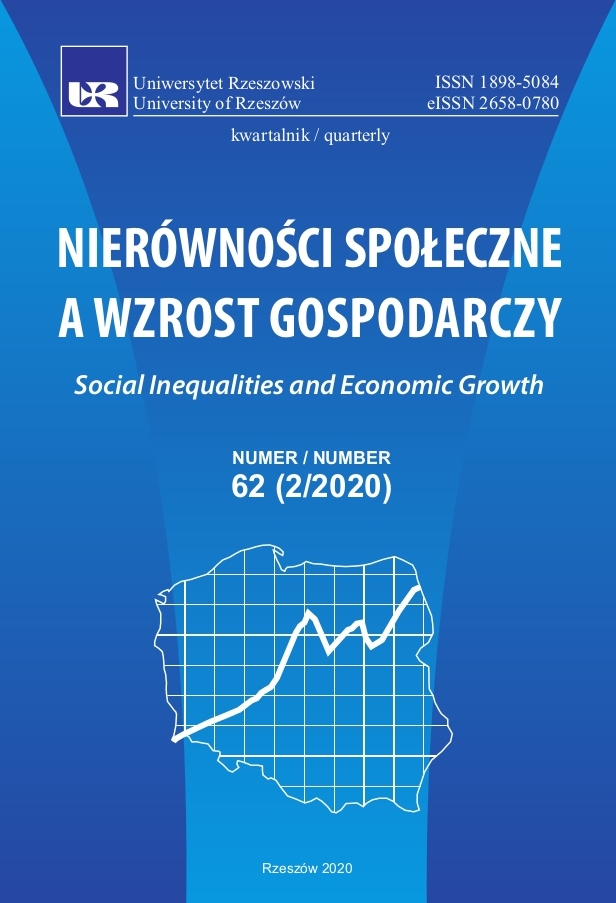The relationship between socio-economic development and labour market flexibility in EU countries
DOI:
https://doi.org/10.15584/nsawg.2020.2.6Keywords:
labour market flexibility, unemployment, socio-economic development, Human Development Index (HDI), Labour Freedom Index (LFI)Abstract
Labour market flexibility refers to legal conditions that facilitate adjustment on labour markets and allow using diverse forms of labour organization, employment and work time. Good labour market flexibility can contribute to the creation of new jobs and to the improvement of social and economic condition of the country. This paper, drawing on many existing international studies, rankings and statistics, seeks to compare the level of socio-economic development of the EU-28 countries with the level of labour market flexibility based on selected indicators such as: Global Competitiveness Index – Flexibility (GCI) by the World Economic Forum, Employment Protection Legislation Index (EPL) by OECD, Labour Freedom Index (LFI) by the Heritage Foundation and Composite Indicator of Employment Protection Legislation (EPLex) by the International Labour Organisation (ILO). The results of rankings for indicators in the area of labour market flexibility are compared with the Human Development Index (HDI) by the United Nations Development Programme (UNDP) in order to estimate the convergence between the high flexibility of labour market and the high quality of life in the EU-28. Our results show that there is no simple convergence common for all countries. High level of HDI goes hand in hand with high flexibility only in the case of Ireland, UK and Denmark. Germany and Sweden, as representatives of welfare state models, have different characteristics. With a high level of HDI, the elasticity ratios are at a low level. For other Western European countries (the so-called old EU member states), positions in HDI rankings are high although labour markets do not show a high degree of flexibility. Exactly the opposite dependence occurs in the so-called new member states (except Slovenia and Croatia), where relatively high flexibility of labour markets is visible, with relatively low positions in terms of the level of social and economic development. The research on relation between variables (HDI 2017, GCI 2017–2018, LFI 2018) based on the Pearson linear correlation coefficient and the Spearman rank coefficient proved there is no significant empirical evidence for the relation between socio-economic development and labour market flexibility.Downloads
Download data is not yet available.
Downloads
Published
2020-11-04
How to Cite
Galik, A., & Bąk, M. (2020). The relationship between socio-economic development and labour market flexibility in EU countries. Social Inequalities and Economic Growth, 2(62), 89–107. https://doi.org/10.15584/nsawg.2020.2.6
Issue
Section
Articles
License
Copyright (c) 2020 University of Rzeszow

This work is licensed under a Creative Commons Attribution-ShareAlike 4.0 International License.


